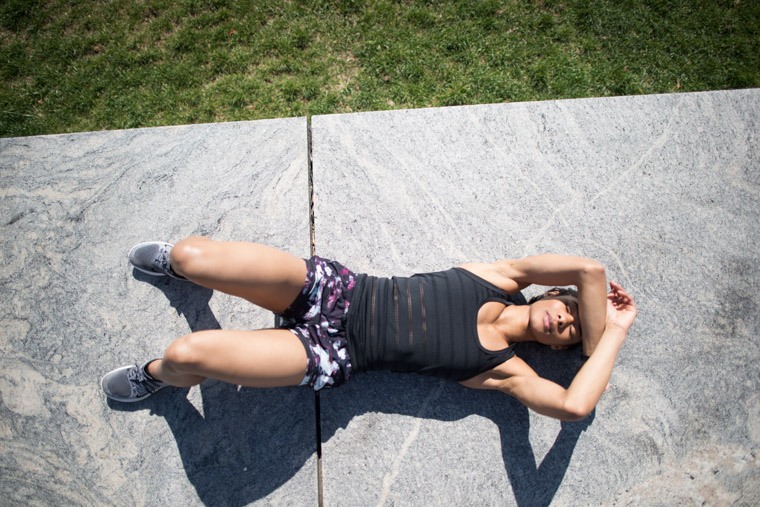Use These Tips for Running on Your Period to Focus More on Prs Than PMS
Of course, there are badasses like Kiran Gandhi, AKA the free-bleeding marathoner, who've literally learned to just go with the flow. But if you're looking for pro advice about running on your period (other than to invest in some period-proof workout shorts), such as what phase of your menstrual cycle is the best time to put in miles, here’s what the experts have to say.

The best and worst times to go for a run during your period
A few years ago, I decided to stop taking birth-control pills, and it took me a while to re-sync my running schedule. At first, every few weeks, I would go for a run, and it would just suck. I’d feel tired and heavy, and I’d find myself running with one arm over my chest in an effort to quell the bounce-inducing pain that persisted with each step, in spite of being armed with the very durable Lululemon Enlite Bra.
All signs pointed to my period being two days away. In other words, I was in my luteal phase, which is right before your period and the time in your menstrual cycle when you're likely to feel your worst. “This phase is dominated by progesterone,” say Drs. Jaime Knopman and Sheeva Talebian, fertility specialists at CCRM New York, co-founders of Truly-MD, and distance runners. “And when progesterone peaks, you probably feel bloated, heavier, and sluggish.”
On the flip side, most women feel their best during the early and mid-follicular phase, which is the week or so after you stop bleeding when estrogen is starting to rise, but hasn’t reached its peak, and progesterone is negative. (The end of this phase is when ovulation occurs, so usually halfway through an average 28-day cycle.) “This combination often results in peak athletic performance,” says Dr. Knopman. It's a great time to schedule tougher workouts like speed drills, or compete in races.

Be mindful of running during your menstruation phase
Just like it's better to avoid doing inversions during yoga practice when you're in the menstruation phase (AKA bleeding phase) of your period because it can cause retrograde menstruation, a condition that's been linked to endometriosis, it's important to reconsider strenuous runs during this time because you're more susceptible to red blood cell and hemoglobin deficiencies.

{{post.sponsorText}}
“Heavy bleeding can decrease your blood count and lead to anemia,” explains Dr. Talebian. “This can lead to fatigue and shortness of breath.”
Plus, your hormones come in to play. “During your period, your reproductive hormones—estrogen and progesterone—drop, which can impact the way you feel and compete,” she says. For some, this actually leads to an improved performance. For others, the potential benefits don’t reveal themselves until you’re past the first few days of your period. Bottom line: Listen to your body. You can also consider taking supplements to help support your system. (Dark chocolate is a surprisingly good source of iron, btw.)
And unless you’re in really rough shape or are dealing with a migraine, try to motivate yourself to get moving, even if it’s only a 20-minute walk or some gentle yoga. “Exercise causes an increase in endorphins, which can serve as natural pain relievers,” say the women's health pros. “It also changes the pattern of blood flow within the body, which can help decrease menstrual cramps. So get out and do whatever feels best for you and your body.” Even if it's just lying in pigeon pose with a heating pad.
Meanwhile, here's how your period affects your skin—and here's the game-changing new product that may help you ditch cramps for good.
Loading More Posts...